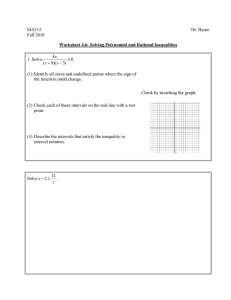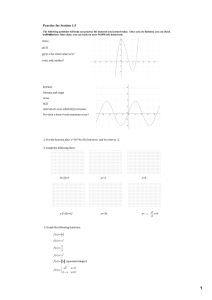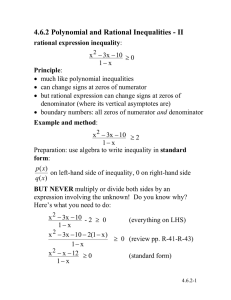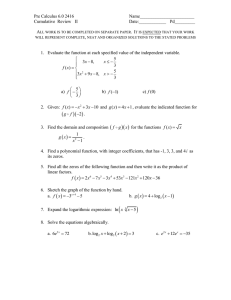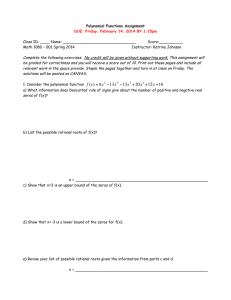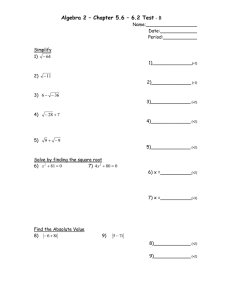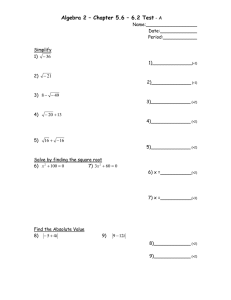4.6.1 Polynomial and Rational Inequalities - Part I
advertisement
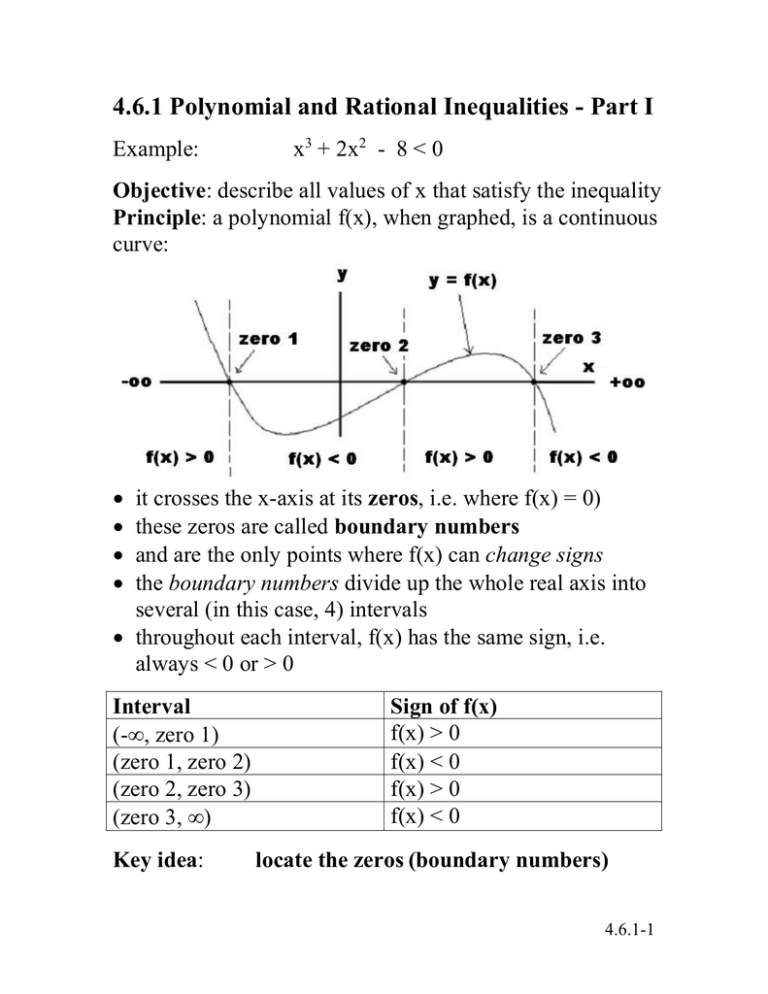
4.6.1 Polynomial and Rational Inequalities - Part I Example: x3 + 2x2 - 8 < 0 Objective: describe all values of x that satisfy the inequality Principle: a polynomial f(x), when graphed, is a continuous curve: it crosses the x-axis at its zeros, i.e. where f(x) = 0) these zeros are called boundary numbers and are the only points where f(x) can change signs the boundary numbers divide up the whole real axis into several (in this case, 4) intervals throughout each interval, f(x) has the same sign, i.e. always < 0 or > 0 Interval (-, zero 1) (zero 1, zero 2) (zero 2, zero 3) (zero 3, ) Key idea: Sign of f(x) f(x) > 0 f(x) < 0 f(x) > 0 f(x) < 0 locate the zeros (boundary numbers) 4.6.1-1 Method 2 Example: x + 2x < 8 1. get everything on lefthand side, 0 on right 2. determine zeros of poly. 3. locate the zeros on a number line. Use open bubbles (since the inequality is strict). The zero will not be part of the solution. 4. tabulate the intervals. x2 + 2x - 8 < 0 (x - 2)(x + 4) = 0 x = 2, -4 ----------------------------------4 2 Interval Test Value x f(x) (-, -4) (-4, 2) (2, ) 5. choose a test value on Interval Test Value x f(x) 7 each interval, and (-, -4) -5 evaluate polynomial (-4, 2) 0 -8 for each test value 3 7 (2, ) (use GC TABLE facility) 6. observe direction of f(x) < 0 for the middle interval inequality from 1 and ans: (-4, 2) the bubble style. State the answer. Note: if the original inequality were "" instead of "<", bubbles would be solid, and answer would be [-4, 2]. 4.6.1-2
